Dưa chua (Vietnamese pickled mustard greens) is a side dish that never fails to appear on the dining table during the Lunar New Year celebration in Vietnam. Although the recipe is simple, the result will surprise you with its mouth-watering flavor.
Essentially, this dish features a combination of gai choy and aromatics bathed in a salt and sugar brine. After pickling, the veggies become a crunchy feast boasting a wonderfully sweet, sour, and salty taste. If that sounds good to you, don’t waste any time and scroll down to learn today’s recipe!
Dưa Chua And Other Vietnamese-Style Pickles
While they aren’t as fancy-looking as other famous Vietnamese dishes, pickles are the “quiet heroes” that round off the culinary experience.
They are what you reach for when you need a touch of zest to balance the greasy nature of deep-fried dishes or to refresh your palate in between courses.
In addition, pickles are an excellent accompaniment to enjoy with main rice-based dishes. For example, crispy, sweet, and sour dưa chua is the perfect condiment for bánh chưng (Vietnamese square sticky rice cake) and bánh tét (sticky rice cake) on Lunar New Year.
Besides dưa chua, there are other well-loved Vietnamese-style pickles. If you’ve enjoyed bánh mì, you’re familiar with đồ chua, a pickle made from daikon and carrots. Another one is cà pháo muối, which is a crispy pickle made from Thai white eggplants.
Tools for Prepping Dưa Chua
You should have the following tools to make dưa chua.
Ingredients Used in Dưa Chua
Here is a list of components that make up pickled mustard greens in Vietnamese style.
Directions for Making Dưa Chua
Dưa chua is a super easy recipe, though the drying and pickling process will take a few days to complete. Here are 5 main steps to do it.
Step 1: Dry The Mustard Greens
Break the mustard green leaves apart, removing the spoiled, rotten, or discolored parts. Rinse the leaves several times to clean them thoroughly.
Afterward, put the vegetables into a basket or on a tray to dry.
You can either dry the mustard greens overnight or sun-dry them. It takes about 6 to 8 hours under weak sunlight and 1 to 2 hours under intense sunlight to completely dry them.
Sunlight and wind will cause the leaves to wilt slightly, improving their texture after pickling. During the sun-drying process, you should cover the mustard greens with a mosquito net to protect them from insects and dust.
Here, I choose to dry the mustard greens overnight on my kitchen counter.
Step 2: Cut The Vegetables
Once done drying, cut the mustard greens into the preferred size.
Note
You should cut the roots and the leaves separately.
Cut the shallots into wedges.
Separate the green and white parts of the scallions. Then, cut them into pieces.
Step 3: Make The Pickling Liquid
Bring a little more than 4 cups (about 1 liter) of water to a boil. Add 3 tablespoons of salt and 1 tablespoon of sugar to the water. Stir well to combine.
Note
The water to spices ratio is 1:3:1. In other words, for 1 quart (about 1 liter) of water, you need 3 tablespoons of salt and 1 tablespoon of sugar.
Next, turn off the heat and let the liquid cool a little. It’s best to start pickling the vegetables while the salt solution is warm, not completely cool. Otherwise, a white film might form inside the jar.
Step 4: Put The Vegetables Into The Jar
Put the mustard greens, shallots, scallions, and chili peppers into the jar layer by layer.
Note
You should place the mustard green leaves beneath the roots. Since the roots are heavier, they’ll help press the leaves down. This way, the veggies will be fully submerged in the pickling liquid.
Step 5: Pickle The Vegetables
Pour the pickling liquid into the jar. Make sure that the liquid covers all the vegetables. Press the mustard greens down so that they are entirely submerged.
Close the lid securely. Put the jar in a warm place (about 68 to 72 degrees F) for 2 to 3 days. You can also place it under sunlight on the first day, then take it to a cooler place afterward.
When the mustard greens turn yellow, your pickle is ready for serving!
Useful Notes for The Best Dưa Chua
Below are the tips that’ll help you choose the ideal mustard greens for pickling with other tricks to prepare it properly.
Explore The Taste Of Vietnamese Dưa Chua!
Crispy, flavorful, and super simple to whip up, try making some dưa chua today!
Did you find pickled mustard greens enjoyable? Have you tried any pickles made in Vietnamese style? Don’t be shy. Drop your answers in the comment. I’d love to read them. In addition, please like and share the post with your families and friends. After all, sharing is caring!
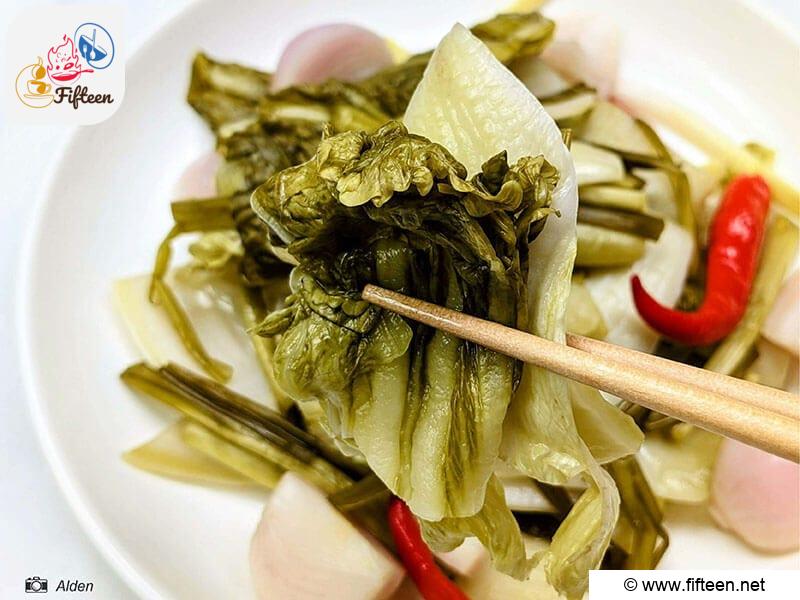
Dưa Chua Recipe (Vietnamese Pickled Mustard Greens)
Equipment
- Saucepan
- Spoon
- Glass Jar
- Knife
- Chopping Board
Ingredients
- 2.2 pounds mustard greens
- 3 shallots
- 1.8 ounces chili peppers
- 1.8 ounces scallions
- 3 tablespoons salt
- 1 tablespoon sugar
Instructions
- Break the mustard green leaves apart, removing the spoiled, rotten, or discolored parts. Rinse the leaves several times to clean them thoroughly. Put the vegetables into a basket or on a tray to dry.
- Dry the mustard greens overnight or sun-dry them for 6 to 8 hours.
- Once done drying, cut the mustard greens into the preferred size.
- Cut the shallots into wedges.Separate the green and white parts of the scallions. Then, cut them into pieces.
- Bring a pot of water to a boil. Add salt and sugar to the water. Stir well to combine.Next, turn off the heat and let the liquid cool a little.
- Put the mustard greens, shallots, scallions, and chili peppers into the jar layer by layer.
- Pour the pickling liquid into the jar. Make sure that the liquid covers all the vegetables.Press the mustard greens down so that they are entirely submerged.
- Close the lid securely.Put the jar in a warm place (about 68 to 72 degrees F) for 2 to 3 days. You can also place it under sunlight on the first day, then take it to a cooler place afterward.
- When the mustard greens turn yellow, your Dua Chua is ready for serving!
- Enjoy!
Video
Notes
- The total time is for making 4 servings of this pickle.
- When buying mustard greens, choose the ones with large, tough, and green leaves and feel firm when you hold them. Avoid ones with rough, crushed leaves, or hollow insides, as these are the indicators of old cabbages.
- Don’t purchase ones with withered or yellow leaves and viscous petioles. More importantly, stay away from vegetables that have been infested by pests.
- Using a warm salt solution and placing the jar under the sun for a day can speed up the pickling process.
- Always sterilize the jar with boiling water and wipe it dry before adding the vegetables.
- When serving, use clean utensils to take the mustard greens out of the jar. Avoid stirring, as doing so will cause white forms to foam, which reduces the treat’s shelf life.
- To store dưa chua place the jar in the fridge. It will last for about 2 weeks. Note that the veggies will get sourer with time.
- Some people like to add galangal, which adds a sharp, piney, and citrusy taste, to pickles. If you enjoy this flavor profile, feel free to throw in some!


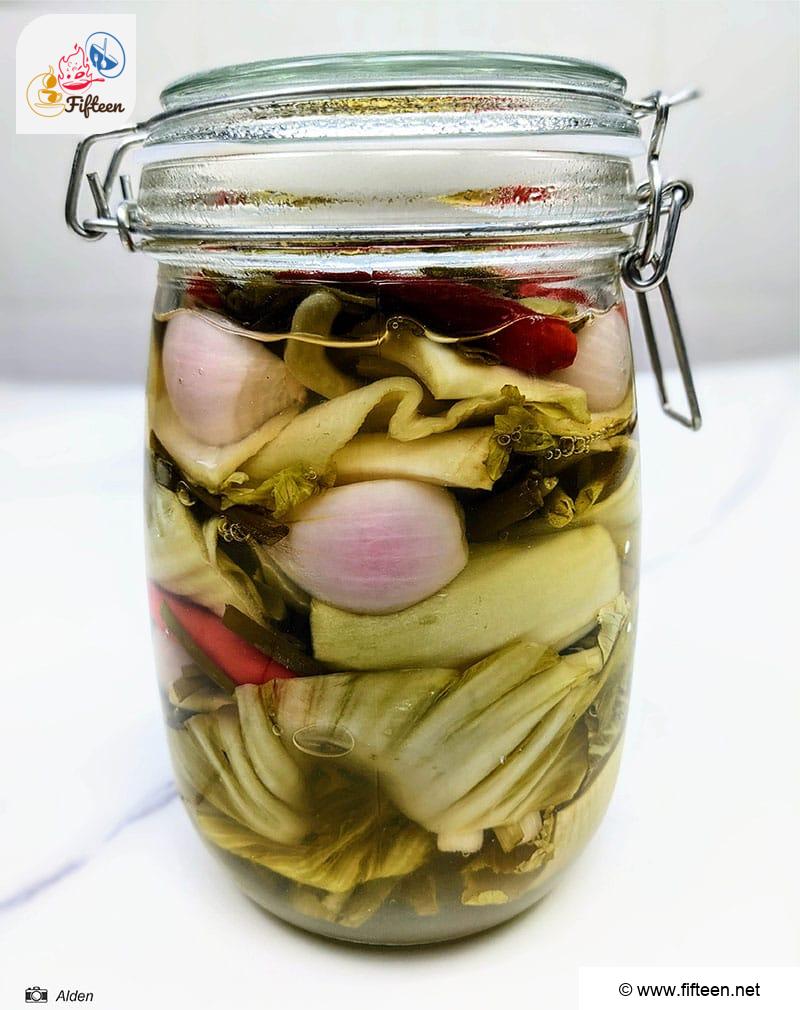
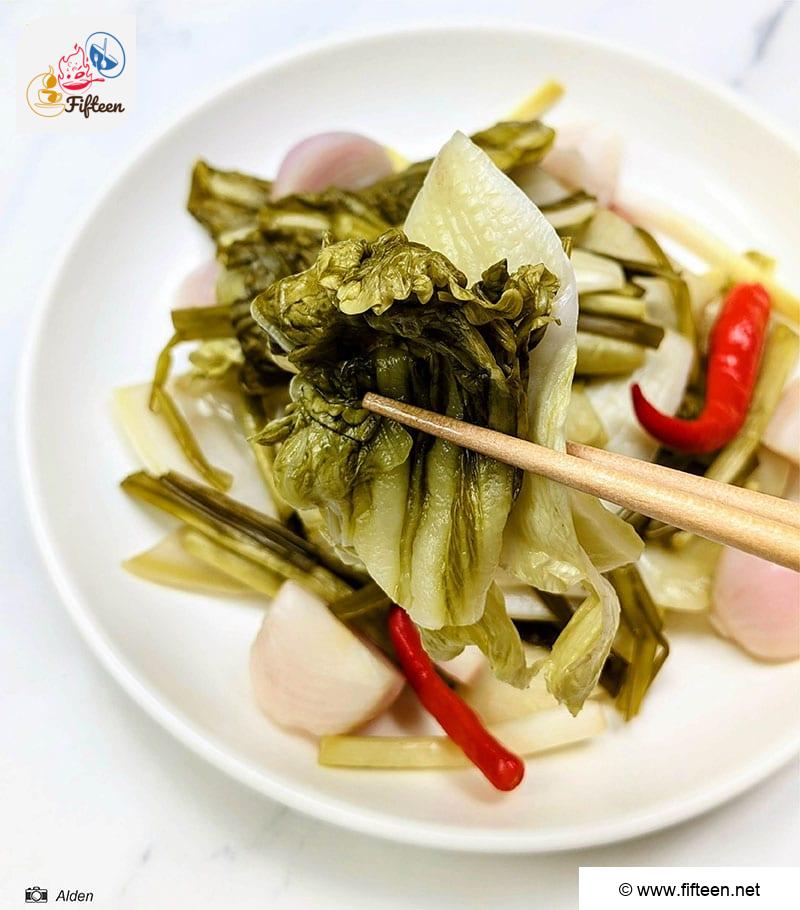
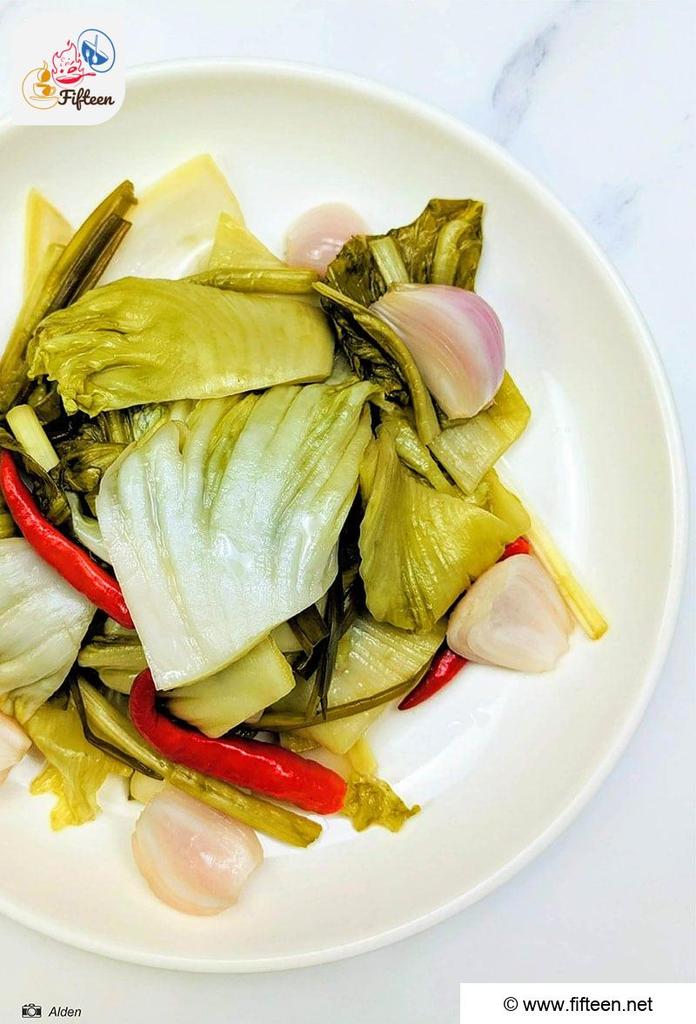
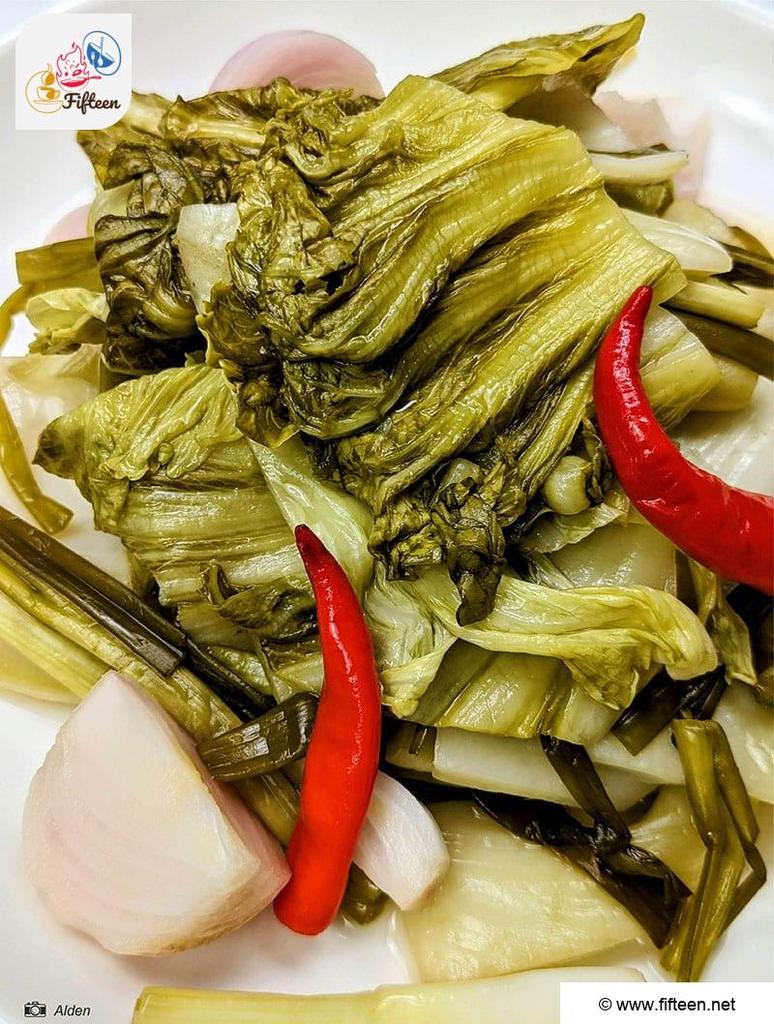
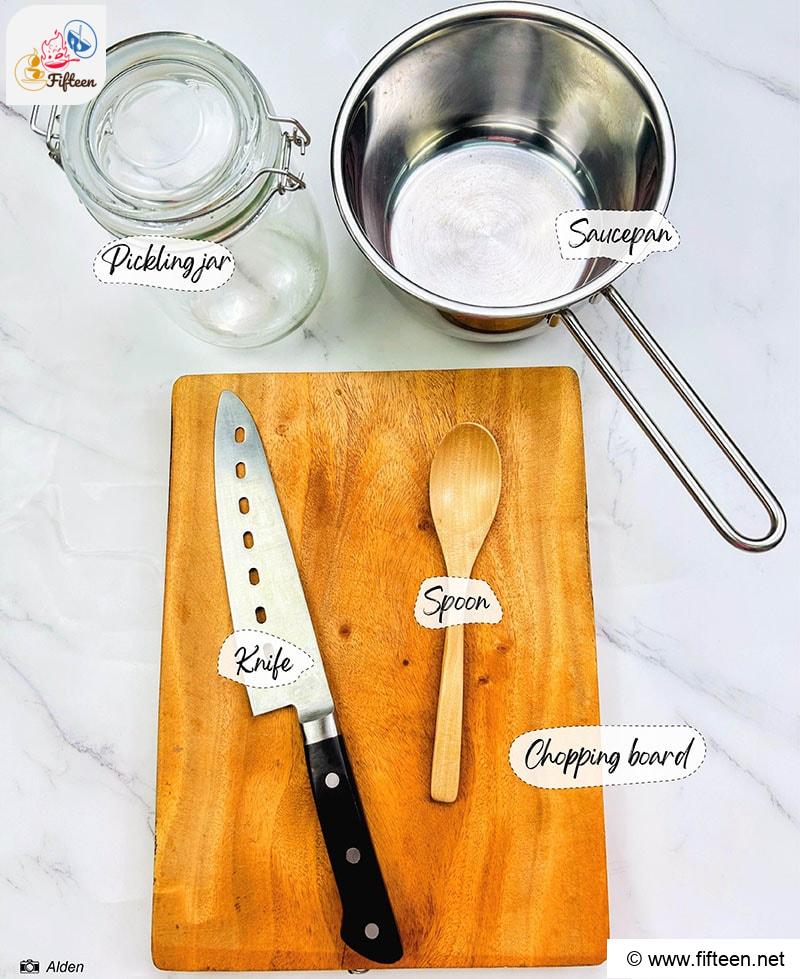
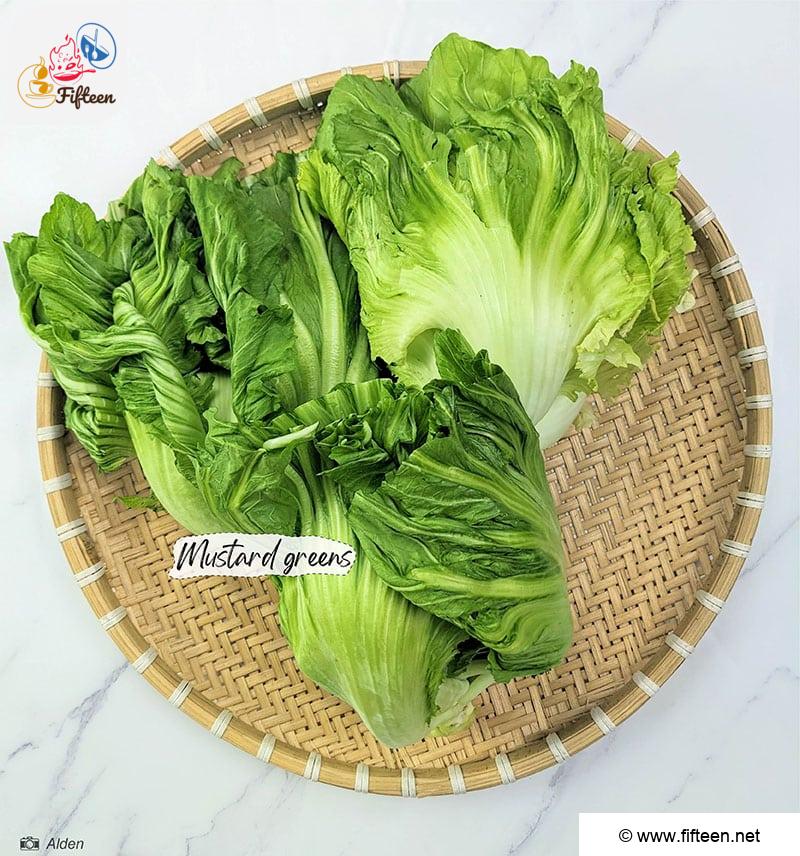
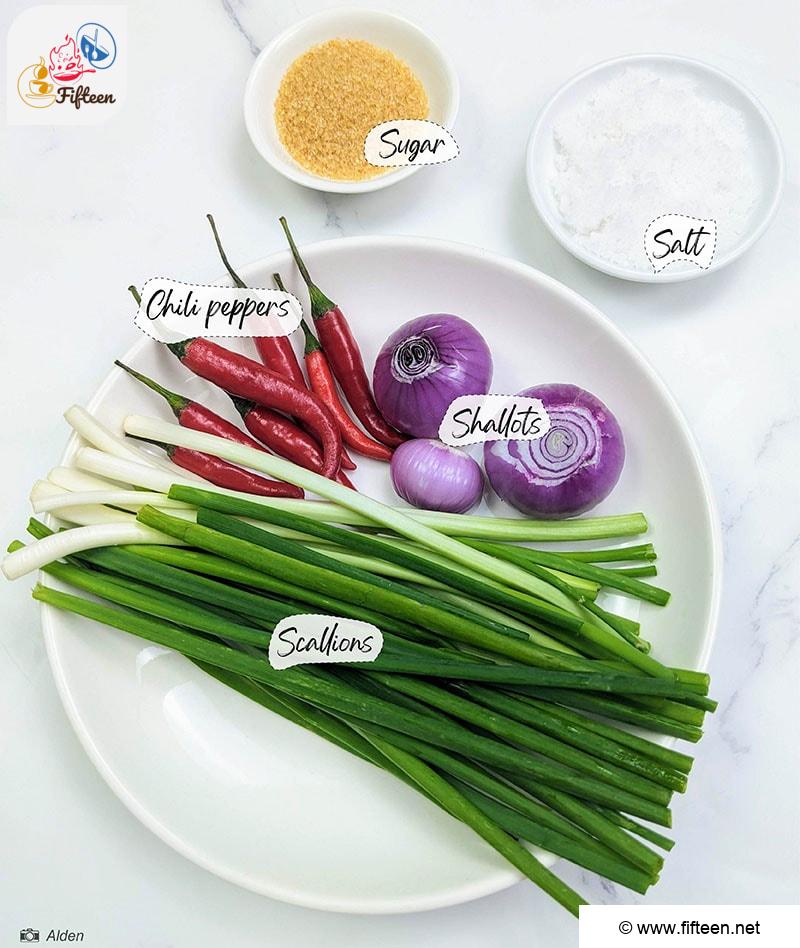
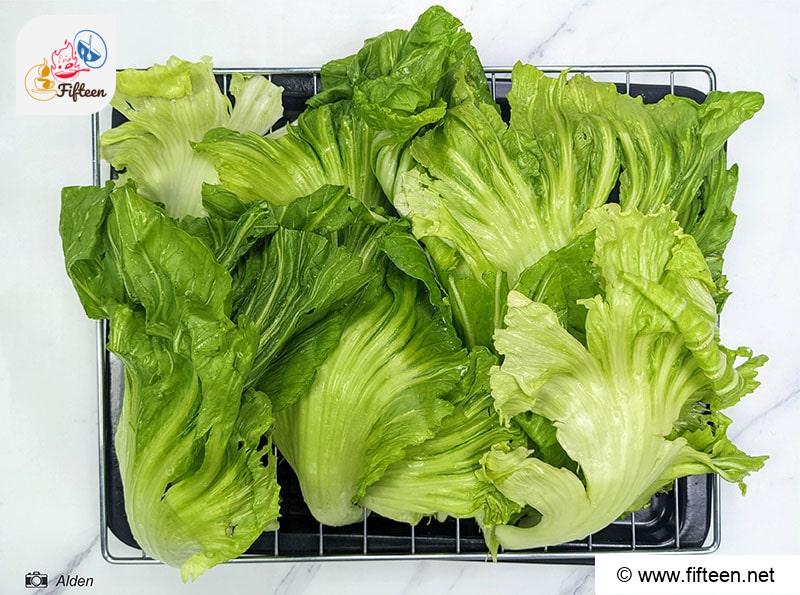
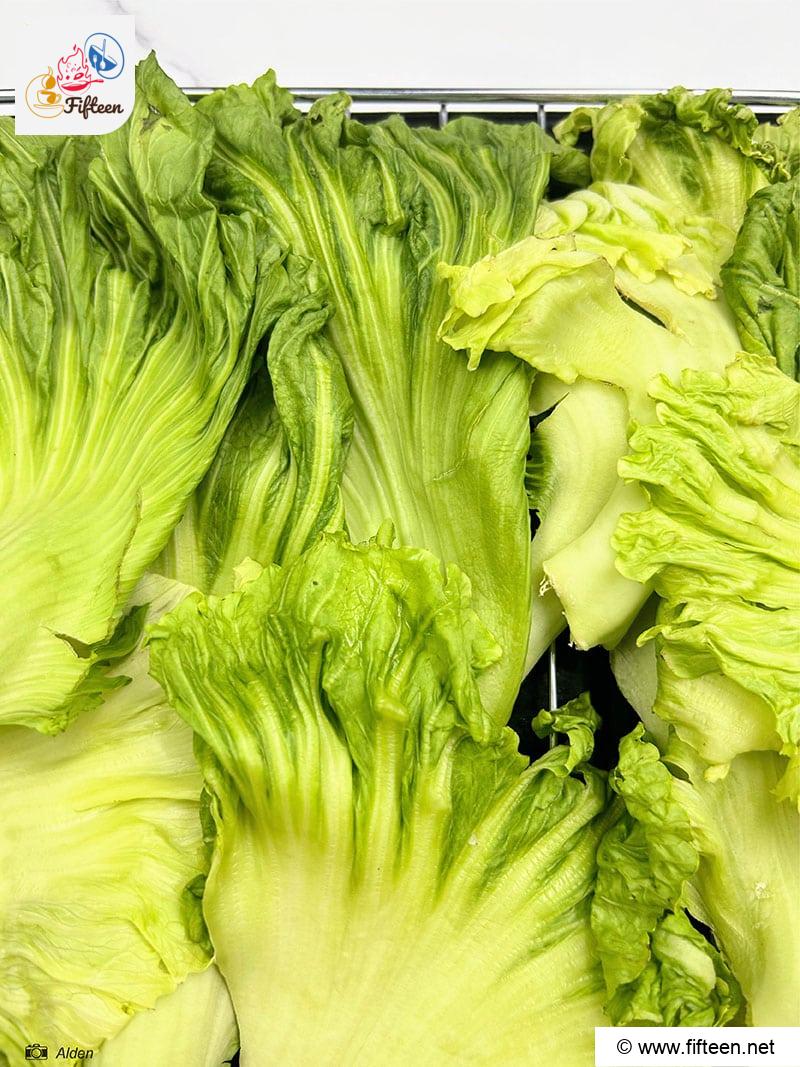
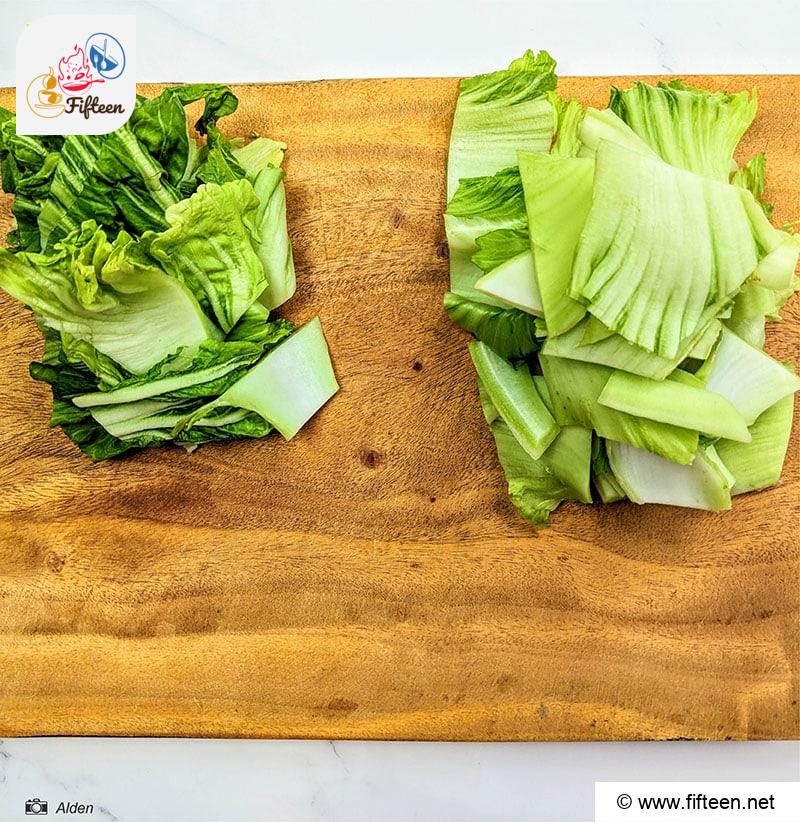
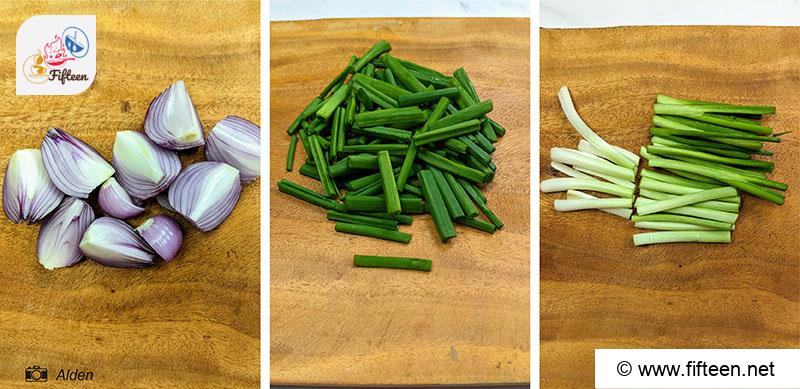
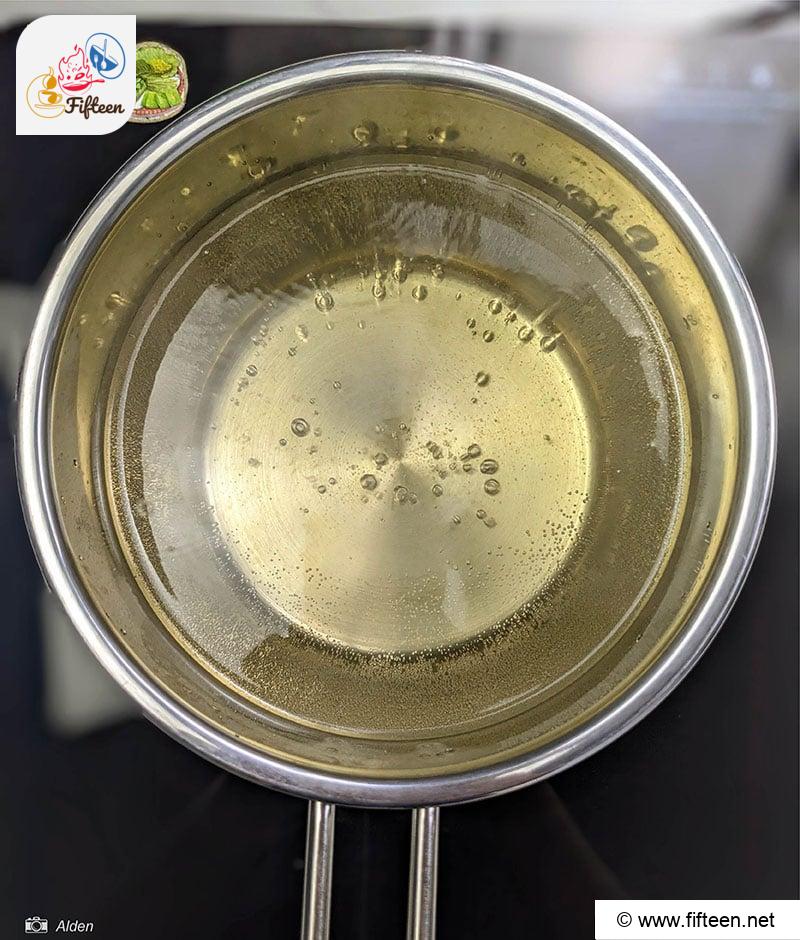
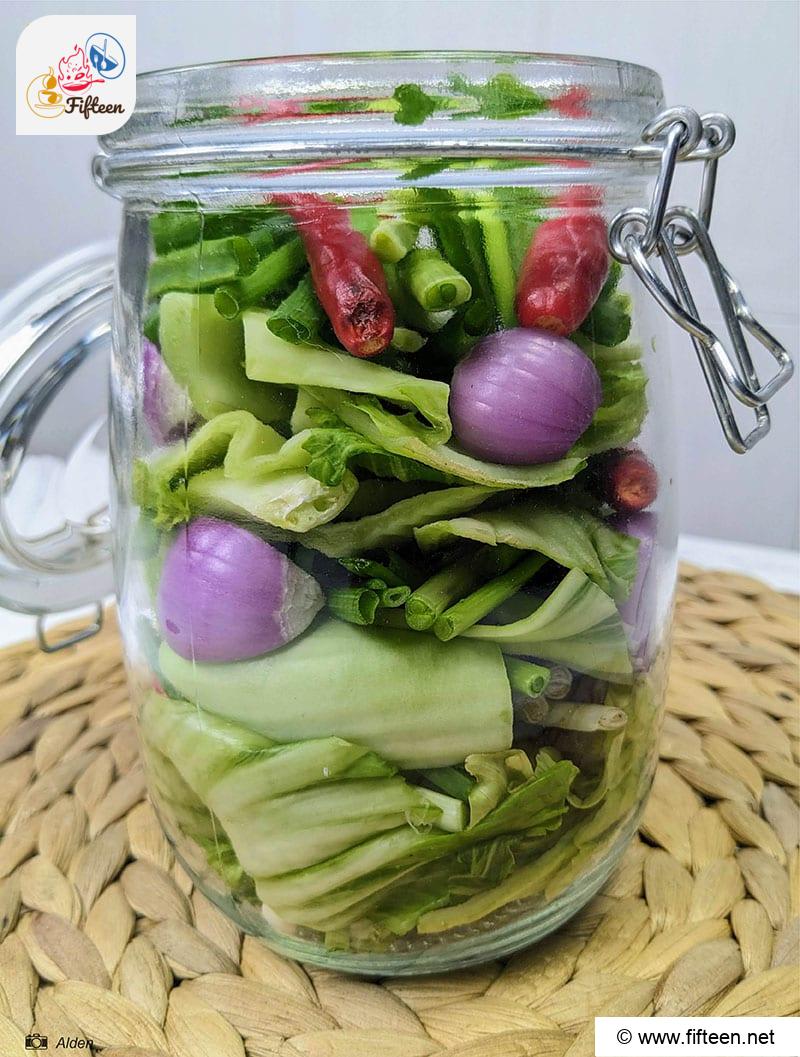
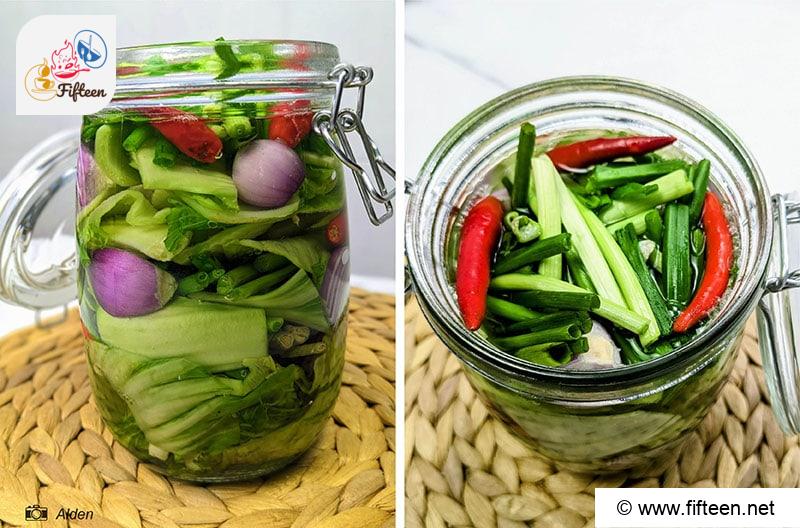
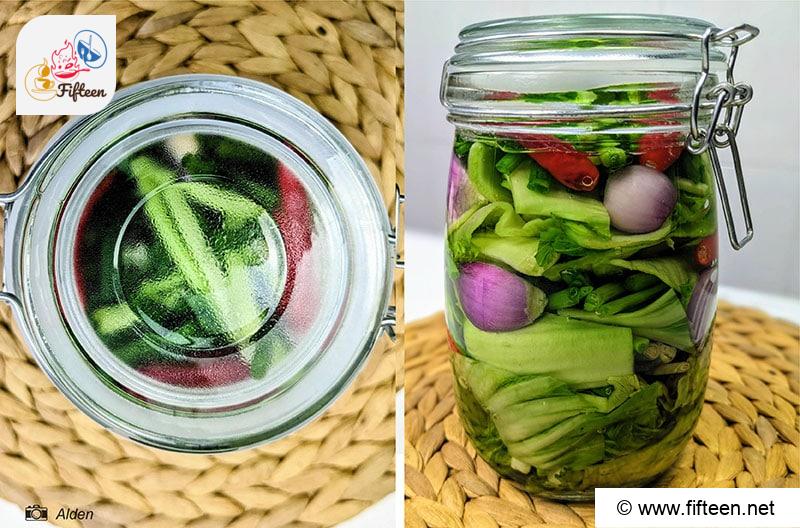
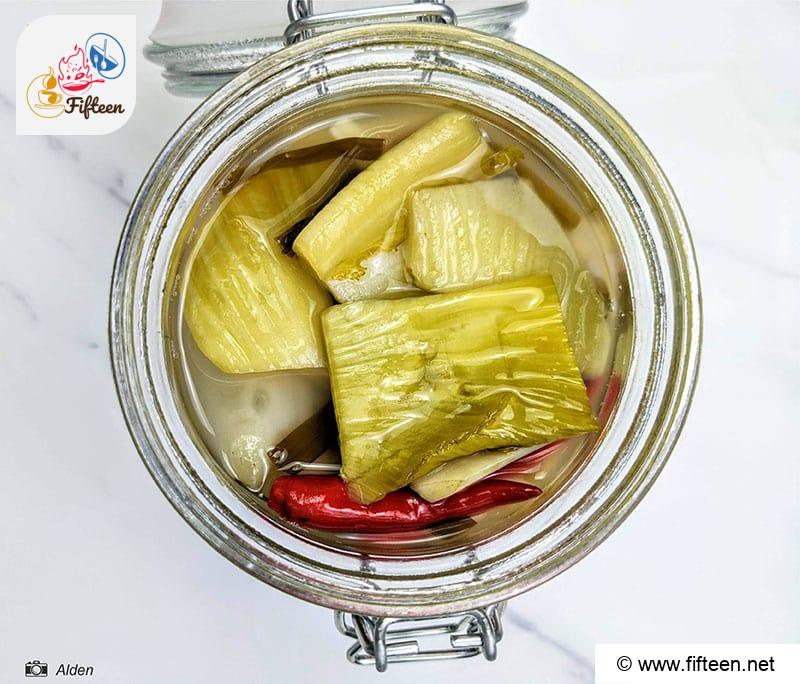
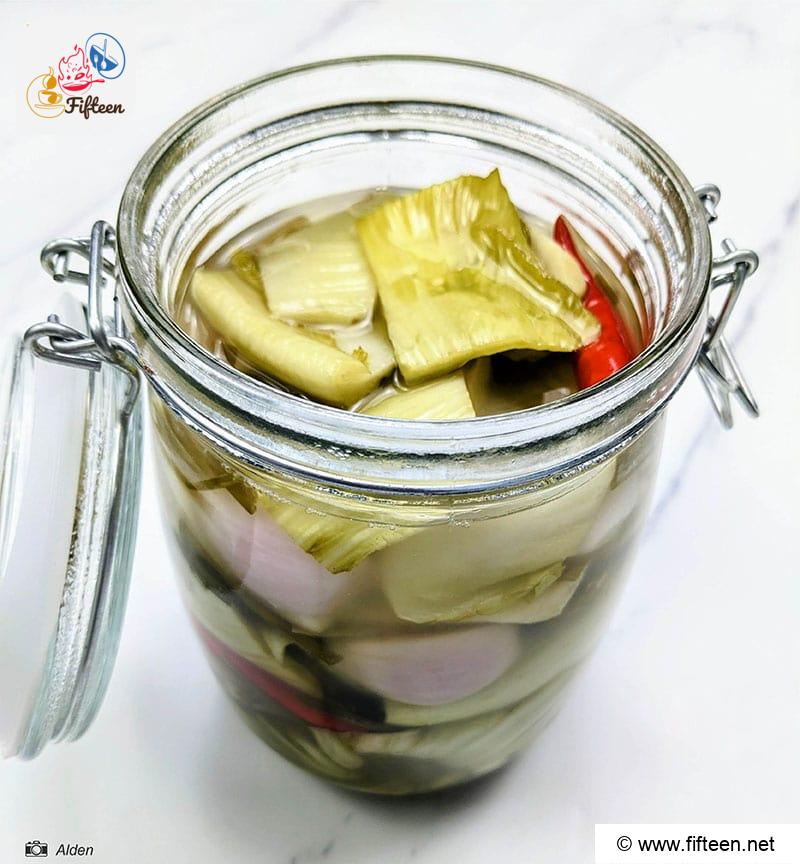
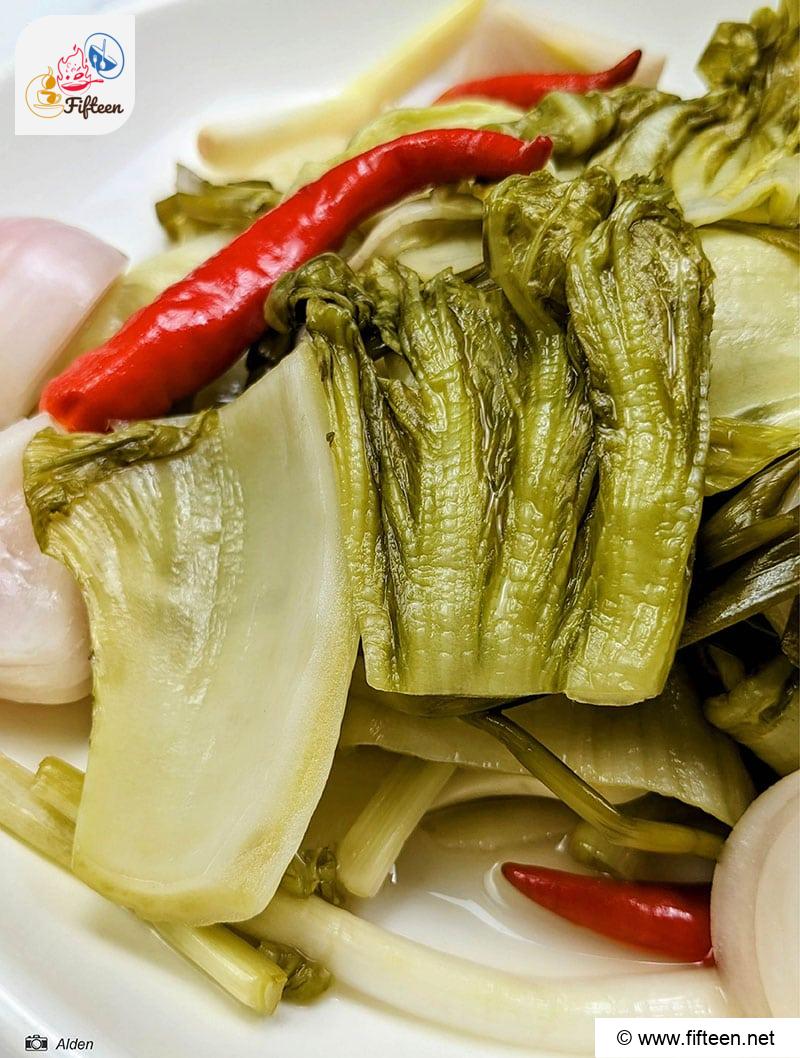
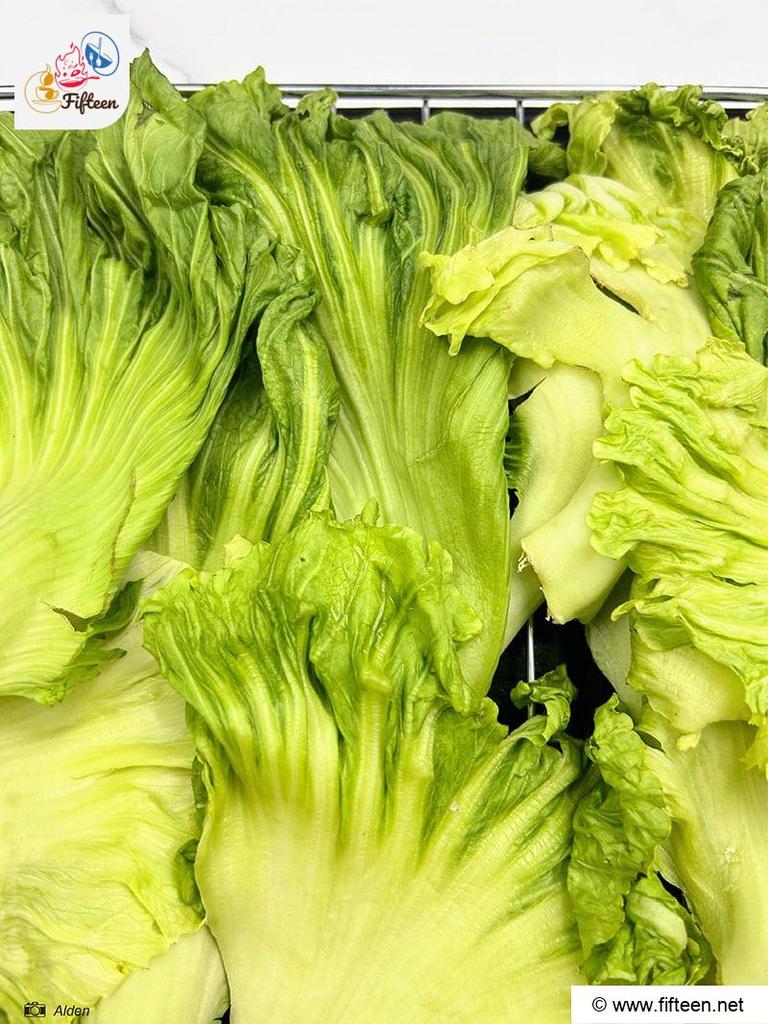
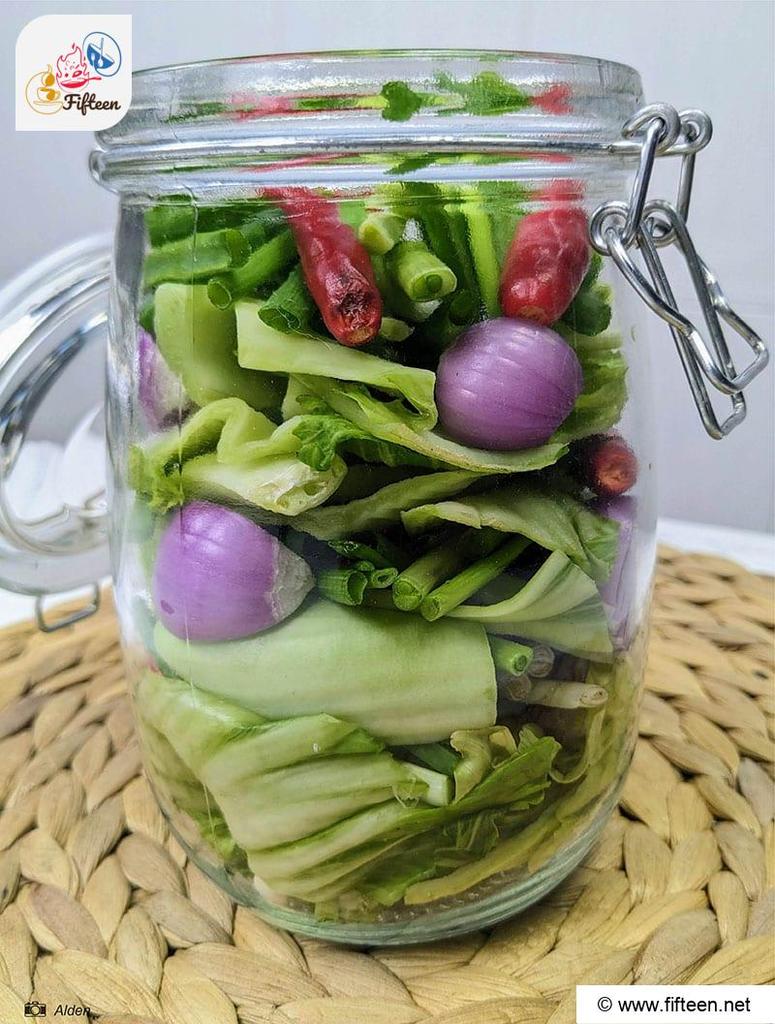
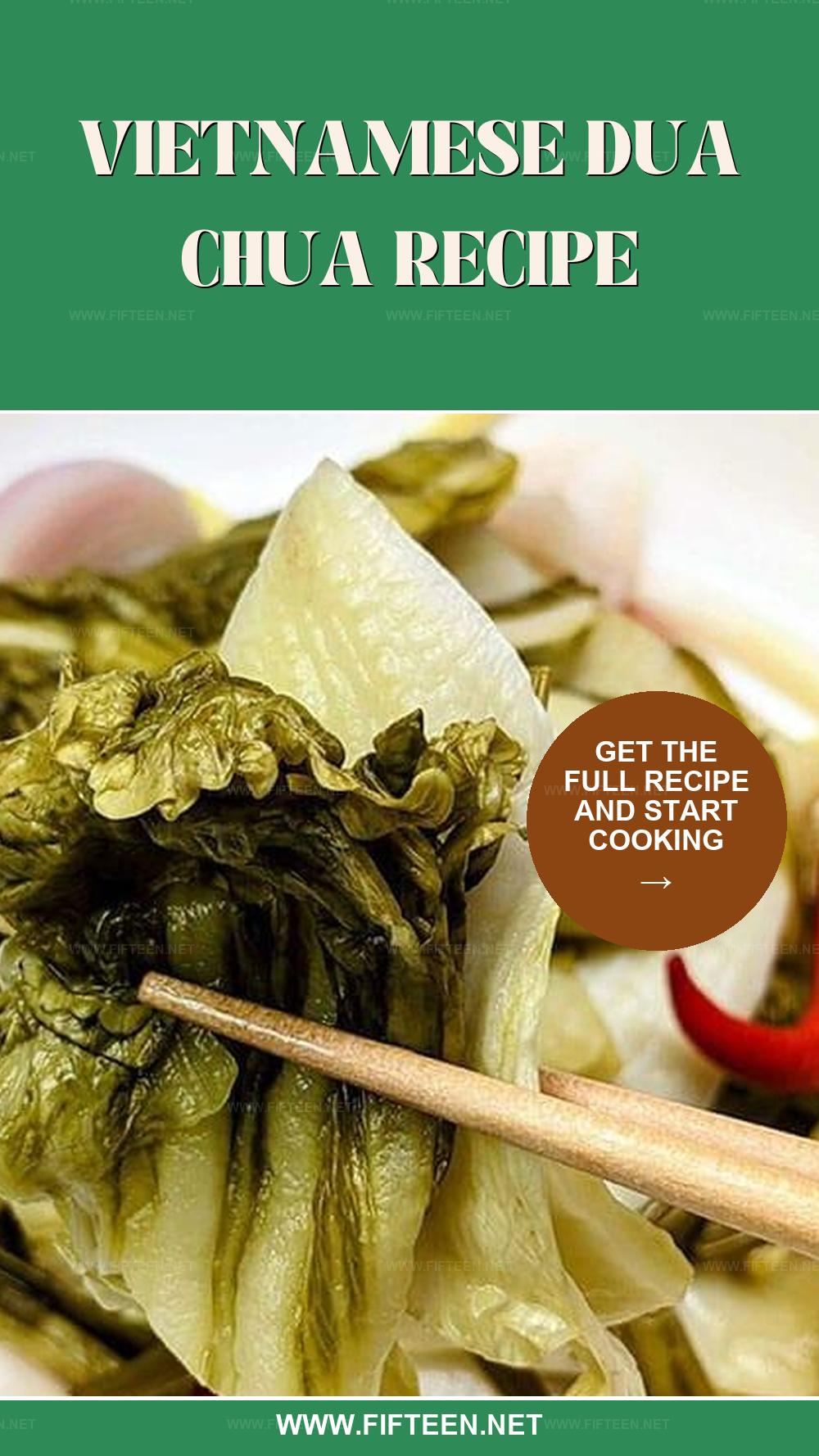
Tien – Alden
Content Writer
Expertise
Home Cooking, Recipe Development, Food Editor, Beverage Editor, Cooking-video Maker, Asian Food Content Creator
Education
Saigon Tourism College
Advanced Culinary Workshop, Beijing
Vietnamese Traditional Cooking School
American College of Vietnam
Alden is a skilled chef with expertise in Asian cuisines, known for blending traditional Vietnamese and Chinese cooking with contemporary innovations. Alden’s passion for Asian flavors and her creative approach to both food and beverages inspires fellow chefs and those aspiring to enter the field.